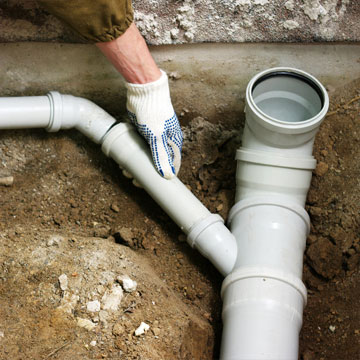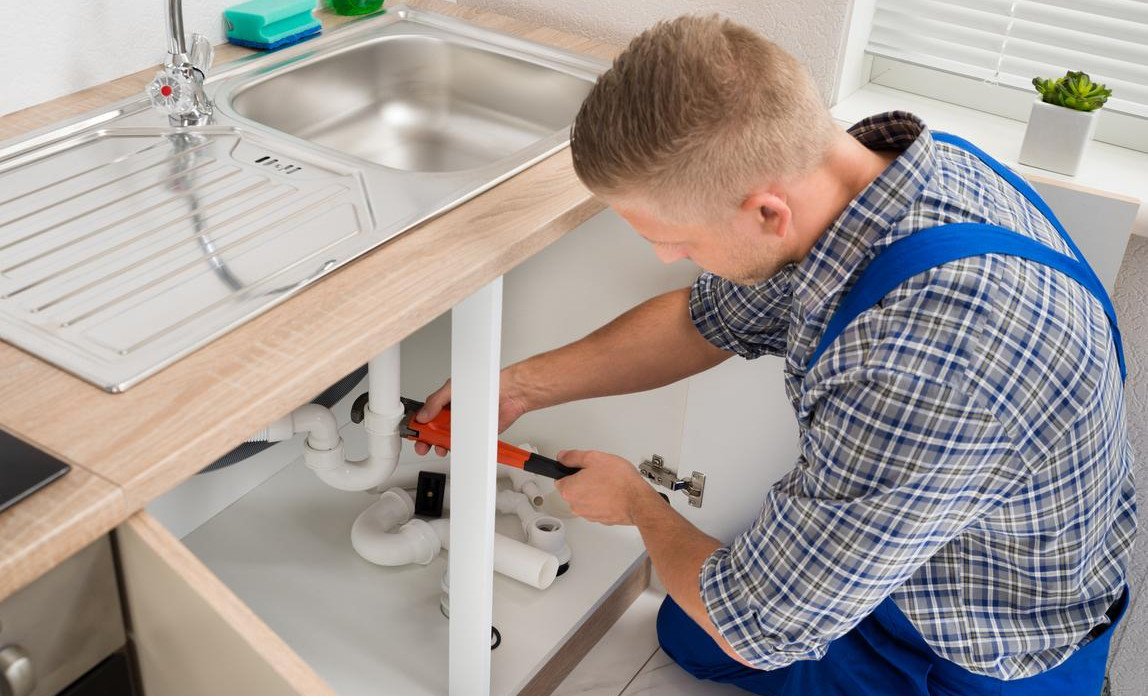Key Information About Your House's Plumbing System Anatomy
Key Information About Your House's Plumbing System Anatomy
Blog Article
Just how do you feel on the subject of Plumbing Installation 101: All You Need to Know?

Recognizing how your home's plumbing system functions is vital for every property owner. From supplying clean water for drinking, food preparation, and bathing to securely removing wastewater, a properly maintained pipes system is important for your family members's health and wellness and convenience. In this comprehensive guide, we'll check out the intricate network that makes up your home's pipes and deal tips on maintenance, upgrades, and taking care of usual issues.
Intro
Your home's plumbing system is more than simply a network of pipes; it's a complex system that guarantees you have accessibility to clean water and efficient wastewater elimination. Knowing its components and exactly how they interact can help you stop pricey repair work and make certain every little thing runs efficiently.
Basic Parts of a Pipes System
Pipelines and Tubing
At the heart of your pipes system are the pipelines and tubing that lug water throughout your home. These can be made of various materials such as copper, PVC, or PEX, each with its benefits in regards to toughness and cost-effectiveness.
Components: Sinks, Toilets, Showers, etc.
Fixtures like sinks, bathrooms, showers, and bath tubs are where water is used in your home. Comprehending exactly how these components attach to the plumbing system helps in identifying troubles and intending upgrades.
Valves and Shut-off Points
Valves manage the circulation of water in your pipes system. Shut-off shutoffs are critical during emergencies or when you need to make repair services, permitting you to isolate parts of the system without interrupting water flow to the entire home.
Water System
Key Water Line
The main water line attaches your home to the metropolitan water system or an exclusive well. It's where water enters your home and is dispersed to numerous components.
Water Meter and Pressure Regulator
The water meter measures your water use, while a stress regulatory authority ensures that water flows at a secure stress throughout your home's plumbing system, avoiding damage to pipes and fixtures.
Cold Water vs. Hot Water Lines
Comprehending the distinction between cold water lines, which provide water straight from the primary, and hot water lines, which lug warmed water from the hot water heater, aids in repairing and preparing for upgrades.
Drain System
Drain Pipes and Traps
Drain pipelines carry wastewater away from sinks, showers, and bathrooms to the drain or sewage-disposal tank. Traps avoid sewer gases from entering your home and also trap particles that might cause clogs.
Ventilation Pipelines
Ventilation pipes permit air into the drainage system, preventing suction that might slow down water drainage and create catches to empty. Proper air flow is necessary for preserving the stability of your pipes system.
Value of Proper Water Drainage
Making certain proper drainage protects against back-ups and water damage. Routinely cleaning drains and maintaining catches can avoid pricey fixings and prolong the life of your plumbing system.
Water Furnace
Types of Hot Water Heater
Water heaters can be tankless or typical tank-style. Tankless heating systems heat water as needed, while storage tanks save warmed water for immediate usage.
Exactly How Water Heaters Connect to the Plumbing System
Understanding exactly how water heaters attach to both the cold water supply and hot water distribution lines helps in diagnosing concerns like inadequate hot water or leakages.
Maintenance Tips for Water Heaters
Consistently flushing your hot water heater to remove debris, checking the temperature level settings, and evaluating for leaks can expand its life expectancy and enhance energy efficiency.
Typical Pipes Problems
Leakages and Their Reasons
Leakages can happen due to maturing pipes, loosened fittings, or high water stress. Attending to leaks without delay prevents water damages and mold development.
Blockages and Clogs
Obstructions in drains and commodes are commonly caused by flushing non-flushable things or a buildup of grease and hair. Making use of drain displays and being mindful of what decreases your drains pipes can protect against blockages.
Indicators of Plumbing Issues to Expect
Low water stress, slow-moving drains, foul odors, or unusually high water expenses are signs of potential plumbing issues that should be addressed promptly.
Pipes Upkeep Tips
Regular Evaluations and Checks
Arrange yearly pipes inspections to catch issues early. Search for indications of leakages, deterioration, or mineral build-up in taps and showerheads.
DIY Maintenance Tasks
Basic tasks like cleansing faucet aerators, looking for commode leakages using dye tablets, or insulating exposed pipelines in cold climates can avoid significant pipes concerns.
When to Call an Expert Plumbing Professional
Know when a plumbing issue requires expert knowledge. Attempting complicated repair services without correct expertise can cause more damage and higher repair costs.
Upgrading Your Plumbing System
Reasons for Updating
Updating to water-efficient components or changing old pipes can enhance water high quality, decrease water costs, and increase the value of your home.
Modern Plumbing Technologies and Their Advantages
Discover modern technologies like clever leakage detectors, water-saving commodes, and energy-efficient water heaters that can save money and minimize ecological influence.
Price Considerations and ROI
Calculate the in advance expenses versus lasting financial savings when taking into consideration plumbing upgrades. Lots of upgrades spend for themselves via lowered utility costs and less repairs.
Ecological Influence and Preservation
Water-Saving Fixtures and Appliances
Mounting low-flow taps, showerheads, and bathrooms can significantly reduce water use without giving up performance.
Tips for Decreasing Water Usage
Straightforward routines like repairing leaks without delay, taking much shorter showers, and running full loads of washing and meals can conserve water and reduced your utility costs.
Eco-Friendly Plumbing Options
Consider lasting plumbing products like bamboo for floor covering, which is durable and eco-friendly, or recycled glass for counter tops.
Emergency Readiness
Steps to Take During a Pipes Emergency
Know where your shut-off shutoffs are located and how to switch off the supply of water in case of a burst pipeline or significant leak.
Importance of Having Emergency Situation Get In Touches With Handy
Maintain contact details for regional plumbers or emergency situation services conveniently available for quick action during a pipes situation.
Do It Yourself Emergency Fixes (When Suitable).
Short-lived repairs like using air duct tape to spot a leaking pipeline or placing a pail under a leaking tap can reduce damages up until a specialist plumbing technician arrives.
Final thought.
Recognizing the anatomy of your home's plumbing system encourages you to maintain it properly, conserving time and money on fixings. By following routine maintenance routines and staying educated about contemporary pipes technologies, you can guarantee your pipes system operates effectively for years to find.
HOW YOUR PLUMBING SYSTEM WORKS
Which Pipes Do What?
Blue lines = fresh water supply entering the building
Red lines = hot water supply entering the building
Grey lines = pipes carrying waste away from the building and venting pipes carrying gases away from the building (through the roof)
YOUR MAIN PLUMBING SYSTEMS
There are two main plumbing systems that support your home s basic plumbing needs one that brings clean water into your home, and one that sends dirty water away from your home. Connected to the toilet, bath, shower, and other faucets in your home, these two systems keep your water flowing in the right directions.
ACCESSING FRESH WATER
Fresh and clean water is brought into your home through the main water supply line . Filtered through one pipe, this water is pressured to flow into the various fixtures in your home at any given time.
This water can be sourced from a well located on your property, a pond or river (mostly cottages), or, as in most cases, from the city s municipal water treatment centre. However, it is important to note that water that is untreated, such as the water siphoned from ponds or rivers, may not be safe to drink. Personal water supplies always need to be treated for hardness and contaminants before consumed.
MUNICIPAL WATER SUPPLIES
Improve taste and odour
Remove sediment
Eliminate hardness
Reduce chlorine
COLD WATER SUPPLY VS. HOT WATER SUPPLY
Cold water flows into your home or building through the service line, which then distributes hot or cold water to your fixtures. This line is most commonly run through a central column that runs floor to floor. Hot water runs in short and straight pipes as the longer the pipeline, the more heat that will be lost in the transfer. Having shorter pipes also allows residents to access hot water more quickly.
WASTE WATER SYSTEM
Your wastewater system is divided into two parts pipes that send wastewater away from your home and venting pipes that send sewer gas away from your home. Sewage water travels through pipes that flush the water and waste towards local sewers that are operated and managed by your city or town. Most sewer systems rely on gravity to move the wastewater to where it needs to go.
The further away from your toilet or sink, the larger wastewater pipes become. This allows for waste to be disposed of from various parts of your home or business at once without pipe blockages. The angle and flow of these pipes are also essential for keeping your waste pipes clear of build up.
https://harrisplumbing.ca/how-your-home-plumbing-system-works/

HOW YOUR PLUMBING SYSTEM WORKS
Which Pipes Do What?
YOUR MAIN PLUMBING SYSTEMS
There are two main plumbing systems that support your home s basic plumbing needs one that brings clean water into your home, and one that sends dirty water away from your home. Connected to the toilet, bath, shower, and other faucets in your home, these two systems keep your water flowing in the right directions.
ACCESSING FRESH WATER
Fresh and clean water is brought into your home through the main water supply line . Filtered through one pipe, this water is pressured to flow into the various fixtures in your home at any given time.
This water can be sourced from a well located on your property, a pond or river (mostly cottages), or, as in most cases, from the city s municipal water treatment centre. However, it is important to note that water that is untreated, such as the water siphoned from ponds or rivers, may not be safe to drink. Personal water supplies always need to be treated for hardness and contaminants before consumed.
MUNICIPAL WATER SUPPLIES
COLD WATER SUPPLY VS. HOT WATER SUPPLY
Cold water flows into your home or building through the service line, which then distributes hot or cold water to your fixtures. This line is most commonly run through a central column that runs floor to floor. Hot water runs in short and straight pipes as the longer the pipeline, the more heat that will be lost in the transfer. Having shorter pipes also allows residents to access hot water more quickly.
WASTE WATER SYSTEM
Your wastewater system is divided into two parts pipes that send wastewater away from your home and venting pipes that send sewer gas away from your home. Sewage water travels through pipes that flush the water and waste towards local sewers that are operated and managed by your city or town. Most sewer systems rely on gravity to move the wastewater to where it needs to go.
The further away from your toilet or sink, the larger wastewater pipes become. This allows for waste to be disposed of from various parts of your home or business at once without pipe blockages. The angle and flow of these pipes are also essential for keeping your waste pipes clear of build up.
https://harrisplumbing.ca/how-your-home-plumbing-system-works/
I am just very inquisitive about Exploring Your Homes Plumbing Anatomy and I hope you enjoyed our entry. Sharing is nice. Helping others is fun. Thanks so much for taking the time to read it.
Book Today! Report this page